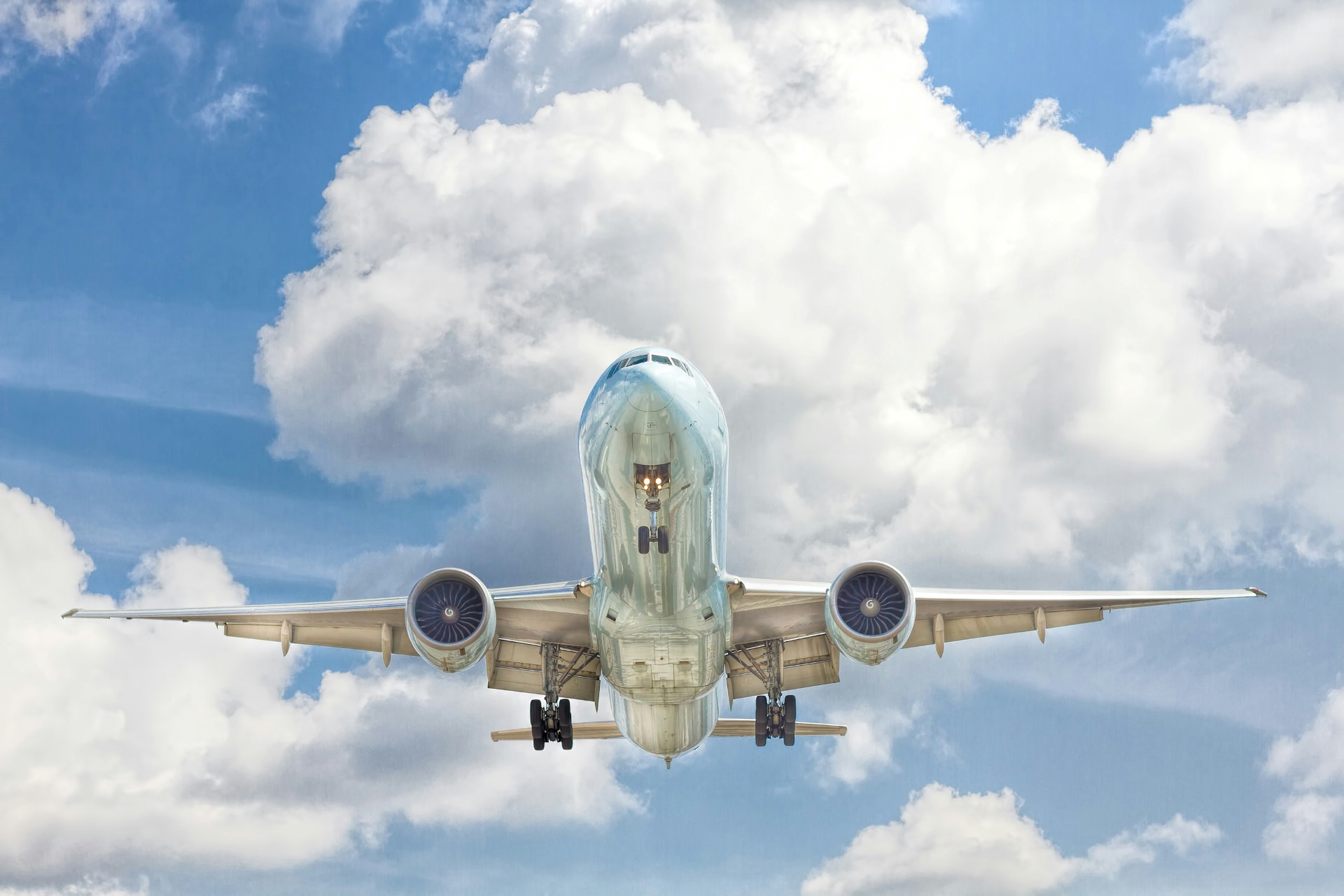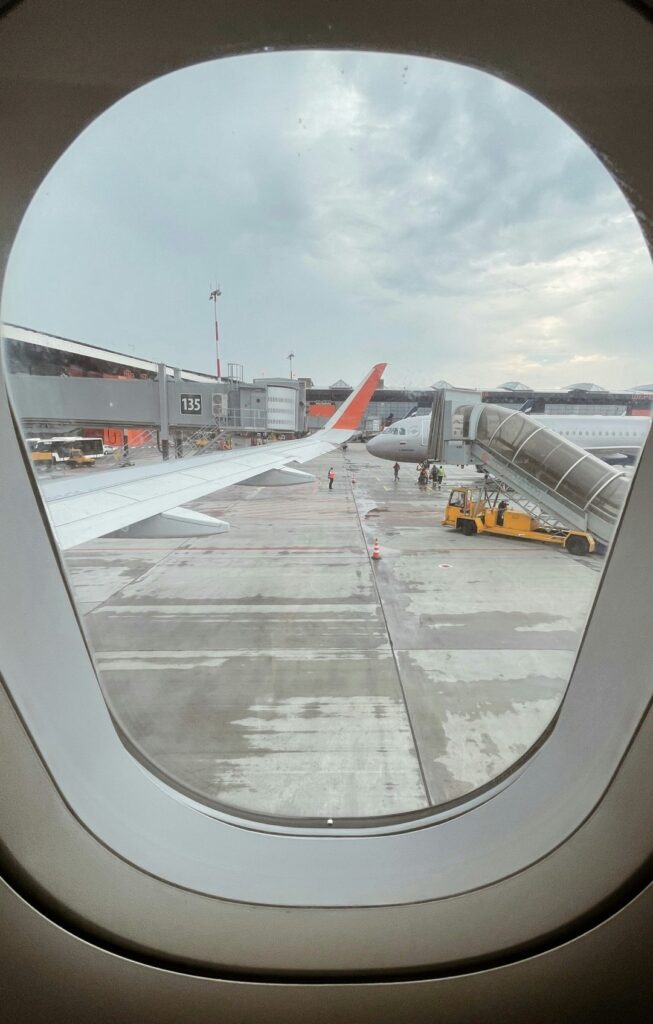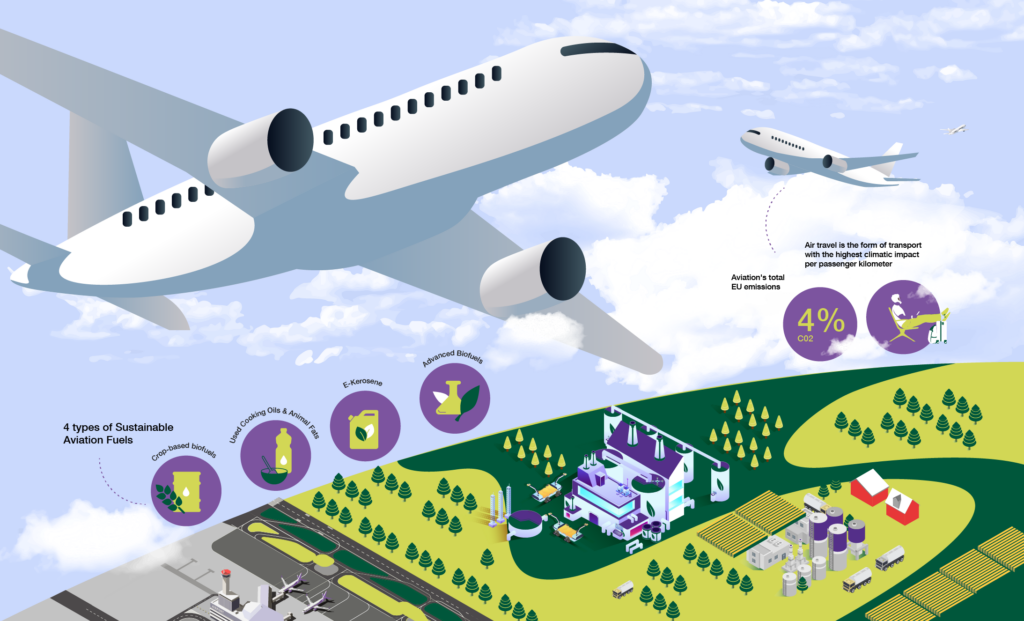Decarbonizing Aviation: Opportunity or Challenge?
The aviation sector must tackle both soaring emissions and growing flight demand by embracing sustainable aviation fuels and reducing air travel
Air travel’s convenience is unparalleled, enabling people to connect across continents in the matter of a few hours. In 2023, 6.3 million commercial flights crossed the European Union, showcasing the high demand for flight travel. However, this convenience comes at a significant environmental cost. The aviation industry is one of the largest contributors to global warming, generating the highest climatic impact per passenger kilometer. In 2022, it accounted for 3.8% to 4% of the EU’s total greenhouse gas (GHG) emissions, making it the second-largest source of transport-related emissions after road transport.
The aviation sector’s dependence on fossil fuels, responsible for 75% of global GHG emissions, poses a key challenge for the sector’s decarbonization efforts. Beyond CO2 emissions, airplanes emit water vapor, nitrogen oxides, sulfur dioxide, and soot particles, all of which contribute to harmful atmospheric processes. For example, contrails formed by the aircraft trap heat, further exacerbating global warming.
In an effort to tackle this challenge, the EU has introduced the RefuelEU aviation regulation, establishing a target of a 2% minimum use of Sustainable Aviation Fuels (SAF) by 2025. The high energy density required for long-haul flights makes SAF a key element of the sector’s decarbonization strategy, and aircraft fuels should supply 70% of the total aviation fuels by 2050. However, achieving these targets is not an easy ride.
The Opportunity: Sustainable Aviation Fuels (SAF)
Sustainable aviation fuels present an opportunity to reduce emissions from the aviation sector, but they are not without limitations. Research indicates that the demand for SAF is projected to grow by 65.7% annually over the next six years. However, there are still obstacles on the road for widespread adoption of SAF in the aviation industry.
Sustainable aviation fuels fall into four primary categories, each with its own benefits and limitations. Crop-based biofuels, while initially promising, have been deemed “unsustainable” by the mobility organization Transport and Environment due to their competition with agricultural land and resulting indirect land-use change (ILUC). Used cooking oils (UCOs) and animal fats face limitations like low availability and risks of fraud, exacerbated by their competing uses in other sectors. Advanced Biofuels, though promising, also risk displacement effects. E-kerosene stands out as the most sustainable option, with scalability potential, though it requires energy-intensive production and strict supply chain management to prevent fraud and ensure transparency.

E-kerosene holds the most potential for scaling up to meet aviation’s needs, though its high energy demands remain a challenge. Overall, the production of SAF requires significant investments and technological advancements.
Currently, SAF are more expensive to produce than traditional jet fuels, and their implementation remains limited. To overcome these barriers, policy support, industry collaboration, and strategic investments will remain crucial factors for upscaling SAF production and making these alternatives more accessible.
In an interview with REVOLVE, Mika Järvinen, Associate Professor of Mechanical Engineering at Aalto University, highlights that the number of certified SAF production routes is expected to increase from seven to more than 10 in the coming years. However, he warns that without rapid growth in SAF production – which currently accounts for just 0.2% of global kerosene demand – the sector’s decarbonization goals may be unattainable.
Circular Economy Models
Circular economy models offer a framework for partially addressing aviation’s decarbonization challenges through the promotion of resource efficiency and waste reduction. The EU’s Circular Economy Action Plan (CEAP), part of the European Green Deal, was introduced in 2020 to reduce reliance on natural resources and promote sustainable growth.
For aviation, applying circular economy principles means rethinking sources for fuel production and consumption.
For aviation, applying circular economy principles means rethinking sources for fuel production and consumption. By using waste-based materials – such as biomass, used cooking oils, and other agricultural residues – as feedstock for SAF production, the industry can reduce its dependence on fossil fuels while tackling broader waste management challenges.
However, as research from Transport and Environment (T&E) reveals, the availability of these waste-based fuels is limited and insufficient to meet aviation’s needs.

Circular Fuels: A Model of Circular Economy for Decarbonizing Aviation
Circular Fuels is an EU-funded project with the potential of applying circular economy principles for transforming the aviation industry. This project aims to develop an advanced SAF production process using solar energy and waste-based raw materials, such as agricultural and forestry residues. These feedstocks will be heated using concentrated solar heat and converted into bio-oil, emitting no additional CO2 from this process. Green hydrogen, produced through solar energy, is then used to remove oxygen content, creating more efficient advanced biofuels. biofuels.
By focusing on waste materials and renewable energy sources, Circular Fuels highlights the potential of circular economy principles to drive aviation’s transition away from fossil fuels and make SAF more affordable. The decarbonization of the aviation industry requires the implementation of multiple technologies and policies, and using advanced biofuels could be a way to limit the total emissions. As Järvinen notes, the project avoids the pitfall of increasing demand for primary materials, such as virgin forests, by relying solely on waste-based resources. Moving forward, innovative methods like capturing CO2 from the air or seawater and repurposing it as raw material could further enhance sustainability.
The Path Forward
To successfully decarbonize the aviation sector, the development and deployment of SAF must be supported by a combination of e-kerosene production and circular economy principles, and a reduction in flight demand.
Collaboration across sectors, such as fuel producers and SAF suppliers, and the application of strong policy frameworks are crucial for overcoming the barriers to SAF production and adoption. Additionally, taxing fossil kerosene and using the revenues for climate action could further support the sustainable transition of the sector, while enhancing the industry’s role in the global transition towards a low-carbon and circular economy.
While some types of SAF offer immediate opportunities to lower aviation’s environmental impact because of their compatibility with the current aircraft fleet, infrastructure and workforce operations, they only represent 0.2% of total global fuel use. Moreover, the life cycle impacts of SAF have led these alternatives to sometimes been referred to as ‘a cure worse than the disease’. Continued innovation in aircraft design, operations, and maintenance, alongside circular economy strategies is thus vital for the achievement of long-term sustainability.
Conclusion
Decarbonizing the aviation sector is inherently challenging given the industry’s reliance on fossil fuels and the technical limitations of alternative energy sources. The growing demand for flights, along with the expansion of air freight operations, further complicates the efforts to make aviation more sustainable. It is no secret that the fastest and most efficient way to decrease aviation emissions is by reducing air travel. Opting for more sustainable modes of transportation, such as trains, not only lowers environmental impact but also offers unique experiences that flying simply cannot match.

The path to decarbonizing the aviation sector requires a balanced approach that includes a reduction of air travel and a widespread adoption of sustainable aviation fuels. SAF, when combined with circular economy principles, can represent a viable solution for mitigating aviation’s environmental impact while maintaining the demands for global connectivity. By shifting to renewable energy sources and rethinking fuel production, SAF can play a key role in cutting down emissions, especially for long-haul flights where alternatives are limited. The simultaneous reduction in non-essential flights and increased SAF implementation represents a powerful strategy for the aviation sector’s transition towards a more sustainable model.
Ultimately, re-imagining how fuels are produced, and resources are managed is key to enhance aviation’s impact in the global shift toward a low-carbon, circular economy. This journey requires collaboration, technological innovation, and commitment across all actors involved. Despite the immensity of the challenge, the potential rewards – including reduced emissions and sustainable, long-term growth – make the journey worth pursuing. The combined approach of reducing unnecessary air travel and advancing SAF technologies offers a promising pathway to achieving the sector’s decarbonization goals. Still, we must not forget, as Mika Järvinen states: “The most important solution to reduce emissions is, of course, to reduce all consumption – including flying.”
